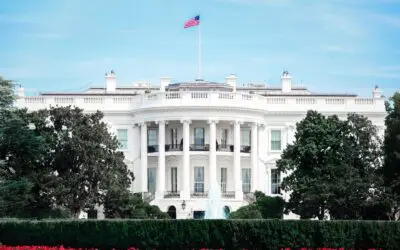With Charlie Cook and Republican leaders raising the prospect of Democrats losing control of the Congress in 2010, we thought it important to expand the Democracy Corps congressional battleground early to determine whether a loss of 41 seats was in the offing based on current polling. A new survey from Democracy Corps conducted by Greenberg Quinlan Rosner Research across the 75 most competitive congressional districts suggests potential losses for the Democrats well within the normal historical range. Their losses will be offset by some further Republican losses and are unlikely to approach what it would take for Republicans to regain congressional control.
Moreover, the vote and incumbent job approval in the most contested Democratic districts are stable – without sign of a broad deterioration.This should give some perspective.
To be sure, there are serious trends that put some Democrats at risk, particularly a pervasive anti-incumbent mood across all of the Democratic seats; however, this is present in the Republican-controlled districts as well. Voters in both the Democratic- and Republican-held vulnerable seats are unsure if they will reward their members with reelection next November.
Limiting Republican gains is the continuing crash of the Republican Party across these districts. This development is part of the reason that Republicans are having trouble capitalizing on the anti-incumbent mood. It also explains why they will have trouble replicating what the Democrats did in 2006 and 2008, when the Democratic Party emerged with a surprising image advantage across the Republican-leaning districts they picked up.
This memo is based on a survey of 2,000 likely voters in the 55 most competitive Democratic-held districts and the 20 most marginal Republican-held districts conducted for Democracy Corps by Greenberg Quinlan Rosner Research October 6-11, 2009.
Analysis: Anti-incumbent mood persists across marginal districts
Members in the top tier, the 20 most vulnerable Democratic seats on the front lines, hold a stable but small lead overall. As we found in the last cycle, some of the most vulnerable are also the most prepared, and are harder to defeat than you would expect. It is in the second tier of 20 seats where we see the most slippage on image and vote to reelect – an important warning sign. In this poll, we added a third tier of 15 long-term Democratic incumbents in mostly very Republican seats. These incumbents have a good lead and strong personal standing, though the anti-incumbent mood carries here as well with their vote at just 50 percent. For now, the battle- ground is contained in the top 40 seats, though we will continue to monitor the full potential battleground.
It is important to note that the class of ’06 is in a much stronger position than the class of ’08 – suggesting that length of tenure and work in the district can build support despite an anti- incumbent environment.
Limiting Republican gains is the continuing crash of the Republican Party across these seats. That is an extraordinary development and part of why Republicans are having trouble capitalizing on the anti-incumbent mood. This also explains why they will have trouble replicating what Democrats did in 2006 and 2008 when the Democratic Party emerged with a surprising image advantage in these seats, most of which were Republican-held four years ago. The image of the Republican Party, the incumbent Republicans and the Republicans in Congress are all falling in the battleground – particularly in the Republican tier of seats.The Republicans have marginally improved their vote position in their 20 seats, but they are short of 50 percent in our named ballot and losing ground on some key incumbency measures.




